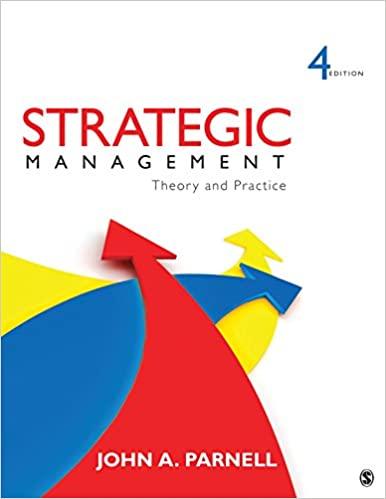In 1951, Robert Peterson launched a chain of drive-thru restaurants located primarily in California, Texas, and Arizona.
Question:
In 1951, Robert Peterson launched a chain of drive-thru restaurants located primarily in California, Texas, and Arizona. From the beginning, Jack in the Box restaurants featured a clown named Jack who greeted motorists ordering through a two-way speaker device encased inside Jack’s head. Business operations have been conducted under various names and public, private, and subsidiary affiliations, including Foodmaker, Ralston Purina, and currently (public) Jack in the Box, Inc.
Jack in the Box is known as a fast-food innovator, introducing the first breakfast sandwich and prepackaged portable salad. Whereas other fast-food restaurants are often hesitant to make major product line changes, Jack in the Box continuously modifies its offerings to provide customers with an ever-changing array of food items.
In response to a well-publicized E. coli food poisoning incident in 1993, Jack in the Box implemented the industry’s first comprehensive Hazard Analysis & Critical Control Points
(HACCP) system for managing food safety and quality the following year. Jack in the Box continues to support tougher legislation to mandate food safety systems throughout the fast-food industry and actively partners with national consumer organizations to educate the public about the best techniques families can use to protect themselves against home-based food poisoning.
In the mid-2000s, Jack in the Box began to emphasize pricier, more upscale items on its menu. The firm hopes to succeed with such higher-margin products as deli sandwiches while retaining its traditional customer base.
Jack in the Box currently operates and franchises more than 2,200 restaurants in the western and southern United States, most of which are company-owned, as well as about 600 Qdoba Mexican Grill fast-casual restaurants. The restaurant targets the adult market with a broad and changing selection of distinctive, innovative products, including hamburgers, specialty sandwiches, tacos and other ethnic products, finger foods, breakfast foods, unique side items, and dessert items.
Case Challenges
1. Jack in the Box is a well-known fast-food restaurant chain in many parts of the southwestern United States and California. However, the chain has not penetrated markets in much of the remaining sections of the country. Should Jack in the Box continue to concentrate its efforts on a limited geographical area?
2. Jack in the Box experienced a crisis in 1993 when four customers died from E.
coli-tainted hamburgers. What could have been done to avoid this type of crisis?
Was it managed effectively?
3. Jack in the Box owns a higher percentage of its stores than do most of its fastfood rivals. Should the chain continue this approach or does franchising offer greater prospects for growth?
4. In an industry where all competitors appear to market similar products with dollar menus, how has Jack in the Box differentiated itself from its rivals? What more can and/or should be done in this regard?
Step by Step Answer:






